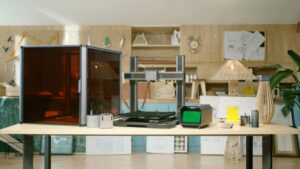Science Fair Success: Tips for a Winning Project
Science fairs offer students a unique opportunity to explore scientific curiosity, develop critical thinking, and showcase their creativity. A winning science fair project not only demonstrates scientific rigor but also captivates judges and audiences with clear communication and innovative ideas. Whether you’re a student aiming for the top prize, a parent supporting your child, or a teacher guiding a class, preparing a standout project requires careful planning, execution, and presentation. This comprehensive guide, grounded in educational research and best practices, provides evidence-based strategies to create a winning science fair project. From choosing a topic to presenting with confidence, here’s how to achieve science fair success.
Why Science Fairs Matter
Science fairs foster skills that extend beyond the classroom, including inquiry, problem-solving, and communication. A 2019 study in Journal of Research in Science Teaching found that participation in science fairs enhances students’ scientific literacy and self-efficacy, boosting their confidence in STEM fields. A well-executed project can also earn awards, scholarships, or recognition, opening doors to future opportunities in science and technology.
The Science Behind a Great Project
A winning science fair project aligns with principles of the scientific method—a systematic approach to inquiry involving observation, hypothesis, experimentation, and analysis. Additionally, self-determination theory (2018, Learning and Motivation) highlights that projects tied to personal interests increase motivation, while metacognition—reflecting on your process—improves outcomes, per a 2017 study in Educational Psychology Review. These principles guide the strategies below to ensure your project is both rigorous and engaging.
Step-by-Step Guide to a Winning Science Fair Project
Creating a standout science fair project involves careful planning, execution, and presentation. Below is a detailed, research-backed guide to help you succeed, tailored for students, parents, and teachers.
Step 1: Choose a Compelling Topic
A great project starts with a topic that sparks curiosity and aligns with your interests. A 2020 study in Science Education found that student-driven projects lead to higher engagement and better outcomes.
- Explore Interests: Consider topics you’re passionate about, like environmental science, robotics, or biology. For example, if you love animals, explore “How does temperature affect fish behavior?”
- Ensure Feasibility: Choose a topic that’s manageable within your time, budget, and resources. Avoid overly complex experiments requiring specialized equipment.
- Check Guidelines: Review science fair rules (e.g., safety regulations, ethical standards) to ensure compliance.
- Be Original: Put a unique twist on common topics. Instead of “Which plant grows fastest?”, try “How does music affect plant growth rates?”
Action Step: Brainstorm 5-10 topics based on your interests. Narrow it down to one that’s feasible, original, and aligns with fair guidelines. Write a one-sentence description of your project idea.
Step 2: Develop a Strong Research Question and Hypothesis
A clear research question and testable hypothesis are the foundation of a scientific project. A 2018 study in Journal of Science Education and Technology emphasized that well-defined questions improve project clarity and focus.
- Research Question: Make it specific and measurable (e.g., “How does soil pH affect tomato plant growth?”).
- Hypothesis: Formulate a testable prediction (e.g., “If soil pH is more acidic, then tomato plants will grow taller due to better nutrient absorption.”).
- Background Research: Read books, articles, or credible online sources to understand your topic and support your hypothesis.
Action Step: Write a research question and hypothesis. Spend 2-3 hours researching your topic using library resources or sites like Google Scholar to ensure your hypothesis is informed.
Step 3: Design a Rigorous Experiment
A well-designed experiment is key to a winning project. The scientific method requires controlled, repeatable tests, as highlighted in a 2016 study in The American Biology Teacher.
- Variables:
- Independent Variable: What you change (e.g., soil pH).
- Dependent Variable: What you measure (e.g., plant height).
- Controlled Variables: Factors you keep constant (e.g., water, sunlight).
- Materials: List all equipment and supplies, ensuring they’re safe and accessible.
- Procedure: Write clear, step-by-step instructions that others could replicate.
- Repetition: Conduct multiple trials (e.g., 3-5) to ensure reliable results.
Action Step: Create a detailed experimental plan, including a materials list, procedure, and variable chart. Test your procedure once to confirm it’s feasible.

Step 4: Conduct the Experiment and Collect Data
Executing your experiment with precision is critical. A 2019 study in Journal of STEM Education found that accurate data collection enhances project credibility.
- Follow the Procedure: Stick to your plan to ensure consistency.
- Record Data: Use a notebook or spreadsheet to log observations, measurements, and unexpected results.
- Take Photos: Document your experiment visually for your display board.
- Stay Organized: Label data clearly and note any challenges or anomalies.
Action Step: Conduct your experiment over 1-2 weeks, recording data daily in a structured format (e.g., a table with columns for date, measurement, and notes).
Step 5: Analyze Results and Draw Conclusions
Analyzing data turns raw numbers into meaningful insights. A 2017 study in Science & Education emphasized that clear analysis distinguishes top projects.
- Organize Data: Use graphs, charts, or tables to visualize trends (e.g., a bar graph showing plant growth by pH level).
- Statistical Analysis: For advanced projects, use simple statistics (e.g., averages, percentages) to interpret results.
- Draw Conclusions: Compare results to your hypothesis. Were you correct? Why or why not?
- Reflect: Consider what worked, what didn’t, and what you’d do differently.
Action Step: Create at least one graph or chart to display your data. Write a 1-2 paragraph conclusion summarizing findings and their implications.
Step 6: Create a Standout Display Board
Your display board is the visual centerpiece of your project, communicating your work to judges and audiences. A 2018 study in Journal of Science Communication found that clear, visually appealing displays improve audience engagement.
- Structure:
- Title: Catchy and descriptive (e.g., “pH Power: How Soil Affects Plant Growth”).
- Sections: Include Introduction, Hypothesis, Materials, Procedure, Results, Conclusion, and References.
- Visuals: Use graphs, photos, or diagrams to illustrate your work.
- Design Tips:
- Keep it clear: Use large, readable fonts and avoid clutter.
- Use color: Highlight key sections with colored borders or backgrounds.
- Be professional: Ensure neatness and correct spelling.
- Safety: Follow fair rules (e.g., no live animals or hazardous materials on display).
Action Step: Sketch a layout for your display board, allocating space for each section. Create visuals (e.g., graphs) using tools like Canva or Excel.
Step 7: Write a Clear and Concise Report
Many science fairs require a written report summarizing your project. A well-written report demonstrates scientific rigor and clarity.
- Components:
- Abstract: A 200-word summary of your project.
- Introduction: Background and research question.
- Materials and Methods: Detailed experimental procedure.
- Results: Data and analysis.
- Discussion: Interpretation of results and implications.
- References: Cite all sources used.
- Tips: Write clearly, avoid jargon, and follow fair guidelines for length and format.
Action Step: Draft a 1-2 page report, starting with the abstract. Have a teacher or parent review it for clarity and accuracy.
Step 8: Practice Your Presentation
A confident, engaging presentation can set your project apart. A 2020 study in Journal of Science Education and Technology found that effective communication skills enhance judges’ perceptions of project quality.
- Prepare a Script: Summarize your project in 2-3 minutes, covering the question, hypothesis, methods, results, and conclusion.
- Practice Delivery: Speak clearly, maintain eye contact, and use enthusiasm to engage your audience.
- Anticipate Questions: Prepare answers for common questions like “What inspired your project?” or “What would you do differently?”
- Use Visuals: Point to your display board to illustrate key points.
Action Step: Practice your presentation 3-5 times in front of family or friends, timing yourself to stay within 3 minutes. Record one practice to review your delivery.
Step 9: Incorporate Multisensory Elements
Engaging multiple senses can make your project more memorable. A 2019 study in Frontiers in Psychology found that multisensory learning enhances retention and engagement.
- Visual: Use colorful charts or a live demonstration (if allowed).
- Auditory: Explain your project aloud or include a short video explanation.
- Kinesthetic: If permitted, let judges interact with a model or sample (e.g., a plant grown in your experiment).
Action Step: Add one multisensory element to your display, like a small model or interactive chart, ensuring it complies with fair rules.
Step 10: Manage Time and Stress
Science fair projects require significant time and effort. A 2016 study in Frontiers in Psychology found that time management and stress reduction techniques improve project outcomes.
- Create a Timeline:
- Month 1: Choose topic, research, and design experiment.
- Month 2: Conduct experiment and collect data.
- Month 3: Analyze results, create display, and practice presentation.
- Avoid Procrastination: Break tasks into weekly goals to stay on track.
- Manage Stress: Use deep breathing or mindfulness (e.g., 5-minute meditation) to stay calm.
Action Step: Create a 12-week timeline with weekly tasks. Schedule 1-2 hours weekly for project work and a 5-minute mindfulness break before each session.

Tailoring Strategies to Different Age Groups
Science fair projects vary by age and experience level. Here’s how to adapt your approach:
Elementary Students (Grades K-5)
- Focus: Simple, engaging experiments that spark curiosity.
- Strategies: Choose safe, hands-on projects (e.g., “Which paper towel absorbs more water?”). Emphasize visuals and fun.
- Example: Test absorbency with colorful paper towels and display results with a bar graph.
Action Step: Design a simple experiment with 2-3 trials and create a colorful display board with large fonts.
Middle School Students (Grades 6-8)
- Focus: Introduce the scientific method and basic data analysis.
- Strategies: Choose projects with measurable outcomes (e.g., “How does light affect mold growth?”). Include basic statistics like averages.
- Example: Grow mold under different lights and use a line graph to show results.
Action Step: Conduct an experiment with 3-5 trials and include one statistical measure (e.g., average growth rate) in your analysis.
High School Students (Grades 9-12)
- Focus: Advanced experiments with real-world applications.
- Strategies: Explore complex topics (e.g., “How does pH affect bacterial growth?”). Use sophisticated analysis like percentages or correlations.
- Example: Test bacterial growth in petri dishes and present results with a scatter plot.
Action Step: Design an experiment with 5+ trials and include a detailed discussion of real-world implications in your report.
Supporting Roles for Parents and Teachers
Parents and teachers play crucial roles in science fair success:
For Parents
- Guide, Don’t Do: Support your child’s ideas but let them lead the project.
- Provide Resources: Help gather materials or access research tools (e.g., library books).
- Encourage Time Management: Check in weekly to ensure progress.
Action Step: Schedule a weekly 15-minute check-in to discuss your child’s project and offer encouragement.
For Teachers
- Teach the Scientific Method: Provide lessons on hypothesis formation and data analysis.
- Offer Feedback: Review project plans and suggest improvements.
- Facilitate Resources: Share access to lab equipment or online databases.
Action Step: Organize a class workshop on the scientific method and provide a project checklist for students.
Overcoming Common Challenges
Science fair projects can face hurdles. Here’s how to address them:
1. Lack of Ideas
- Issue: Struggling to find a unique topic.
- Solution: Explore science fair websites (e.g., Science Buddies) or discuss interests with a teacher.
- Action Step: Brainstorm 10 ideas and pick one that excites you and fits fair rules.
2. Experimental Errors
- Issue: Unexpected results or failed experiments.
- Solution: Document errors as part of the learning process and adjust variables if needed.
- Action Step: Keep a detailed log of all trials, including failures, to show your process.
3. Presentation Anxiety
- Issue: Nervousness about presenting to judges.
- Solution: Practice multiple times and use visualization to build confidence, per a 2014 study in Journal of Applied Sport Psychology.
- Action Step: Practice your presentation in front of a mirror or record it to refine your delivery.
Measuring Success
A winning science fair project achieves:
- Scientific Rigor: A clear, replicable experiment with accurate data.
- Engaging Presentation: A visually appealing display and confident delivery.
- Personal Growth: Increased confidence, curiosity, and problem-solving skills.
Action Step: After the fair, reflect on what you learned and how you can apply it to future projects or studies.
Conclusion: Shine at Your Science Fair

A winning science fair project combines curiosity, rigor, and creativity. By choosing an engaging topic, designing a solid experiment, and presenting with confidence, you can create a project that stands out to judges and inspires others. With strategies like the scientific method, multisensory elements, and time management, you’ll not only succeed at the fair but also develop skills that last a lifetime. Whether you’re aiming for a ribbon or simply exploring your passion for science, these tips will help you shine. So, grab your notebook, start experimenting, and make your science fair project a success!

